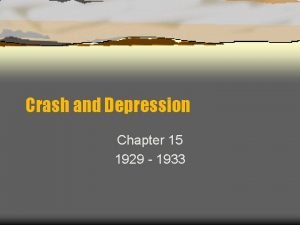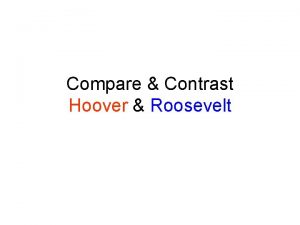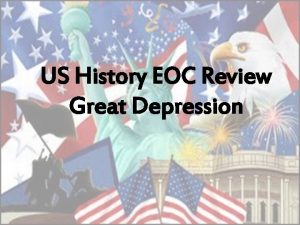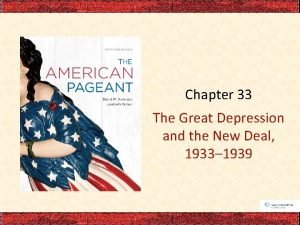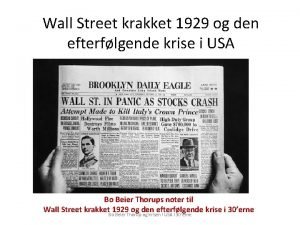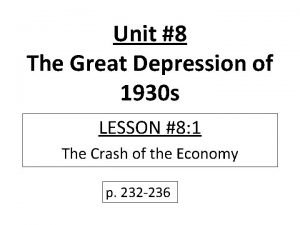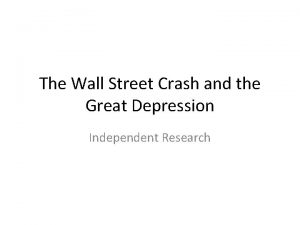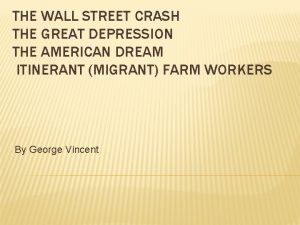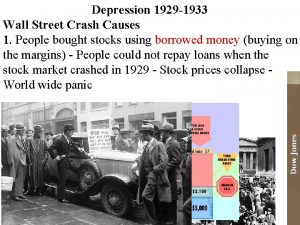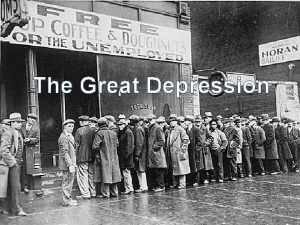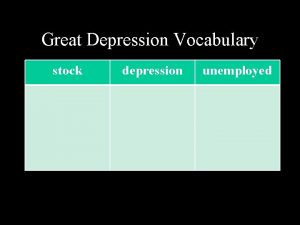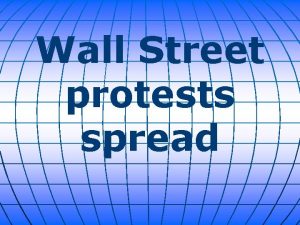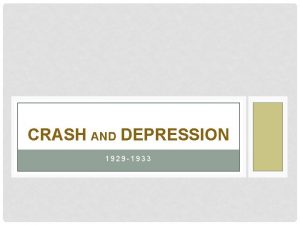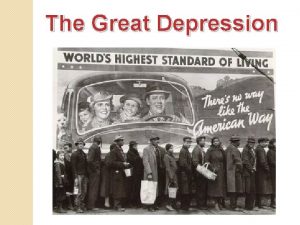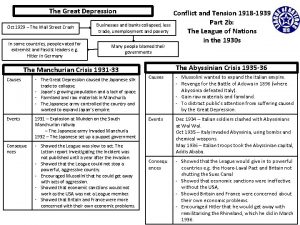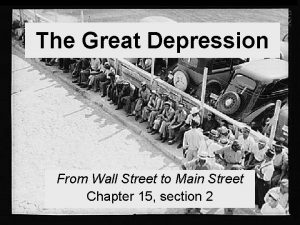The Wall Street Crash and the Great Depression















- Slides: 15

The Wall Street Crash and the Great Depression

Why did share prices rise so much in the 1920 s? n In the years leading up to 1929, the stock market offered the potential for making huge gains in wealth. It was the new gold rush. People bought shares with the expectations of making more money. As share prices rose, people started to borrow money to invest in the stock market. The market got caught up in a speculative bubble. – Shares kept rising and people felt they would continue to do so.

The demand for share prices was incredibly high. It was a quick way to gain money, no matter how much money one initially had in one's pocket. The risk of losing money was not significant as interst rates were low

Why did share prices fall so suddenly in October 1929? n After the government started privatizing stock shares, people started valuing stocks and, relying more on it. It seemed everyone was using stock as their currency, making profit out of it. So when the stock holders started selling the stocks, like a chain reaction, everyone place their stock on sale. The number of stock sale was more available than the number of stock buyers, therefore causing economic deficits. Banks were bankrupted then; one by one affected by the deficit of stocks.

What were the immediate results of the Crash?

Shares had risen way above what the company/firms were worth and suddenly at the same time there was a panic and suddenly everyone wanted to sell their shares, therefore making the shares basically worthless. On October 24 th 1929 almost 13 million shares were sold and once again on October 29 th 16 million shares were sold, leading to the Great Depression.

General Effects… n Contraction of credit n Business closures n Firing of workers (mass unemployment) n Bank failures n Decline of the money supply

n n n n Stockholders lost $40 billion in the first 2 months after the bank crash Smoot-Hawley Tariff was created in 1930. It was to help protect American companies, high tax was imposed on imported goods that lead the less trade between America and the foreign countries. Bank fails, million American citizen suddenly doesn’t had no saving in the bank Factories and shop were force to shut down Drought in the 1930 in Mississippi Valley which causes farmer who weren’t able to pay debts or tax selling their farm with no profit for themselves Interest rate had dropped, prices began to decline and wages still held steady in 1930 In the early 1930, the stock market turn upward but consumer had cut back 10% on expenditures and the drought began, by late 1930, there is a steady rate of decline in the market

In the World… n Large-scale withdrawal of American Capital from European investments n Abandonment of the ‘Gold Standard’ n Hoover Moratorium

What was the US government's response to the Crash? Herbert Hoover – President 1929 -33 (Republican) n n n n Belief in laissez-faire and austerity measures Forced by Congress to intervene Spending to stabilize business community Little response by economy led to defeat in 1932 election

Franklin D. Roosevelt – President 1933 -1945 (Democrat) q The New Deal q Relief, Recovery and Reform measures q The "First" New Deal (1933 -35) aimed at restoring the economy from the top down q The "second" New Deal (1935 -40 s) aimed at restoring the economy from the bottom up q The New Deal was interrupted by WW 2

How did the Crash lead to the Great Depression? n n n n The financial meltdown initiated by Wall Street's Great Crash of 1929 caused billions of dollars in assets to vanish into thin air. Wealthy Americans—who owned almost all the nation's stocks at the time—were walloped by an 80% decline in the value of the stock market. The poor were affected as well There was no revenue circulating Banks failed stagnation between 1929 and 1933, two out of every five banks in America collapsed, causing more than $7 billion of their customers' hardearned money to evaporate. Agricultural sectors in the ‘dust bowl of America’ was also badly hit by drought; caused farmers to take loans

What was the economic and political impact of the WSC on Germany? n n n The US ended its loans to and investments with Germany Protectionist tariffs led to a decline in foreign trade As a result businesses had smaller markets and laid off workers Unemployment rose sharply – 6 million by 1933 Consumer spending dried up and companies went bankrupt thereby worsening the unemployment problem Poverty increased

n Dissatisfaction with the Weimar Republic increased as they were seen to be failing to cure the economic problems n Extremist parties began to increase their support in elections n Successive governments failed n Weimar governments increasing turned to ruling by decree in order to legislate

The result……… In this atmosphere of economic and political chaos the Nazis were able to flourish and manipulate their way in power in early 1933
 Wall street crash of 1929
Wall street crash of 1929 Political cartoon stock market crash 1929
Political cartoon stock market crash 1929 October 29 1929
October 29 1929 Compare and contrast president hoover and roosevelt
Compare and contrast president hoover and roosevelt Aaa new deal logo
Aaa new deal logo The great depression lesson 2 hardship and suffering
The great depression lesson 2 hardship and suffering Pros and cons of the great depression
Pros and cons of the great depression What is the main idea of the cartoon?
What is the main idea of the cartoon? Chapter 33 the great depression and the new deal
Chapter 33 the great depression and the new deal Great stock market crash 1929
Great stock market crash 1929 Børskrakket 1929
Børskrakket 1929 Jordan belfort presentation
Jordan belfort presentation Bartelby the scrivener
Bartelby the scrivener Konferencja wall street
Konferencja wall street Wall street journal manufacturing
Wall street journal manufacturing Rarig great depression
Rarig great depression


